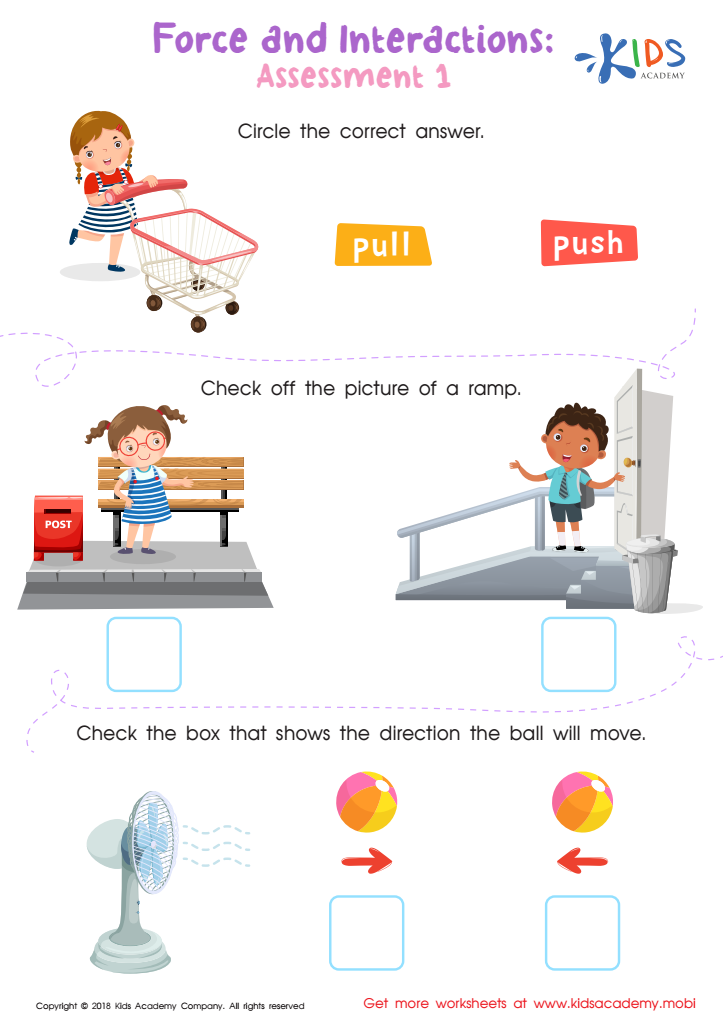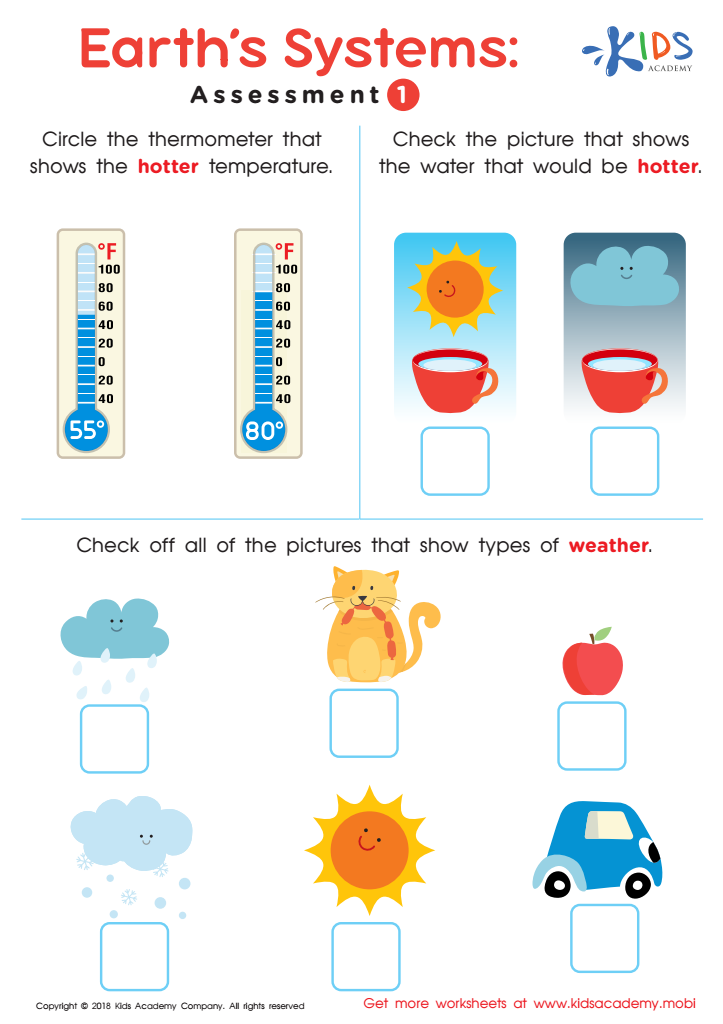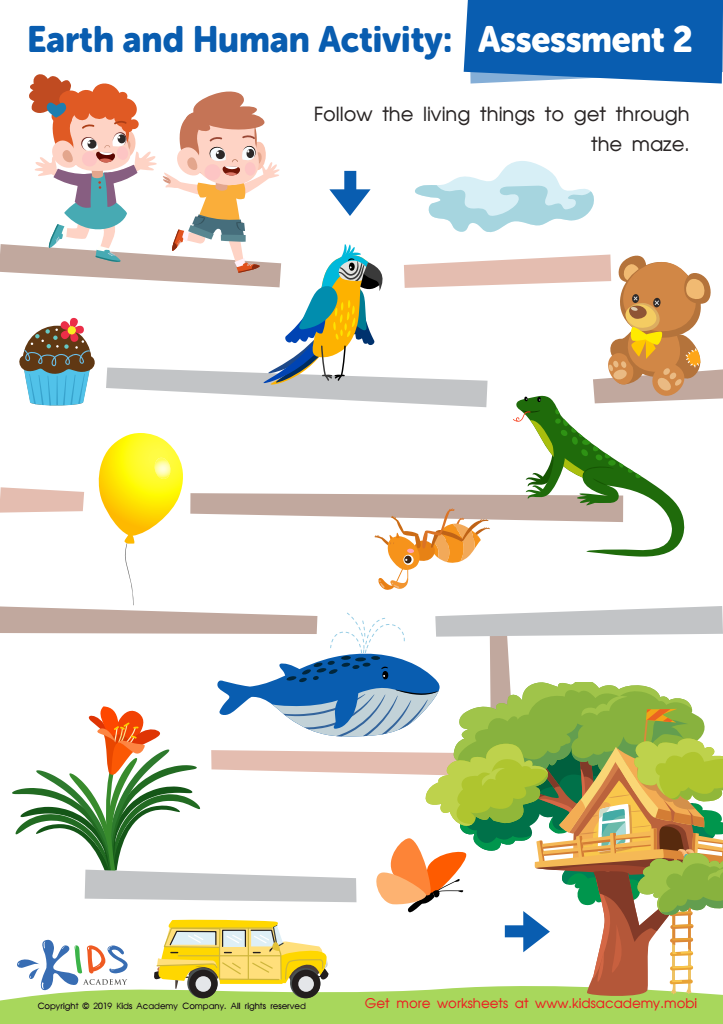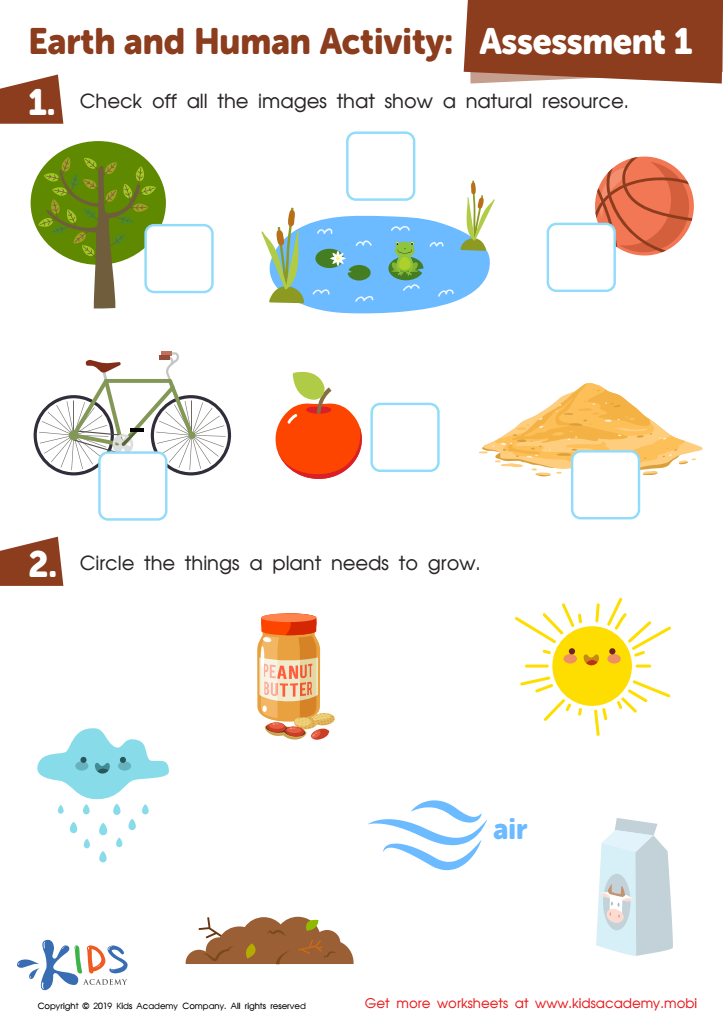Science worksheets activities for 4-Year-Olds
5 filtered results
-
From - To


Force and Interactions: Assessment 1 Worksheet


Earth's Systems: Assessment 1


Earth and Human Activity: Assessment 2 Worksheet


Earth and Human Activity: Assessment 1 Worksheet


Force and Interactions: Assessment 2 Worksheet
Science worksheets activities stand as an essential tool in the educational realm, fostering a deep, interactive learning experience for students of all ages. These activities are not merely sheets of paper filled with questions; they are carefully crafted exercises designed to intrigue, challenge, and inspire young minds.
The first reason science worksheets activities are so beneficial is that they encourage active learning. Unlike passive listening, which can sometimes happen during lecture-style teaching, worksheets require students to engage directly with the material. This hands-on approach aids in retaining complex scientific concepts, from the basics of biology to the intricacies of physics and chemistry.
Moreover, these activities cater to various learning styles. Visual learners can benefit from diagrams and illustrations often included in science worksheets, while kinesthetic learners can interact with the content more effectively through experiments and practical questions that worksheets frequently propose. This inclusivity ensures that no student is left behind, making science accessible and enjoyable for everyone.
Another advantage is the seamless integration of critical thinking skills that science worksheets activities promote. Students are not merely memorizing facts; they are analyzing data, drawing conclusions, and even engaging in the scientific method themselves. This cultivates a level of intellectual rigor and curiosity necessary for not only understanding science but also for applying it to real-world problems.
Furthermore, science worksheets activities provide a versatile resource for both teachers and students. They can be used as a reinforcement tool, supplementing what has been taught in class, or as an evaluation method to assess students’ understanding and progress. Their adaptability makes them a valuable asset in any science curriculum.
In summary, science worksheets activities are an indispensable part of science education. By stimulating engagement, accommodating diverse learning styles, enhancing critical thinking, and offering flexibility in teaching and learning, they play a pivotal role in shaping the scientists, innovators, and informed citizens of tomorrow.
 Assign to the classroom
Assign to the classroom












